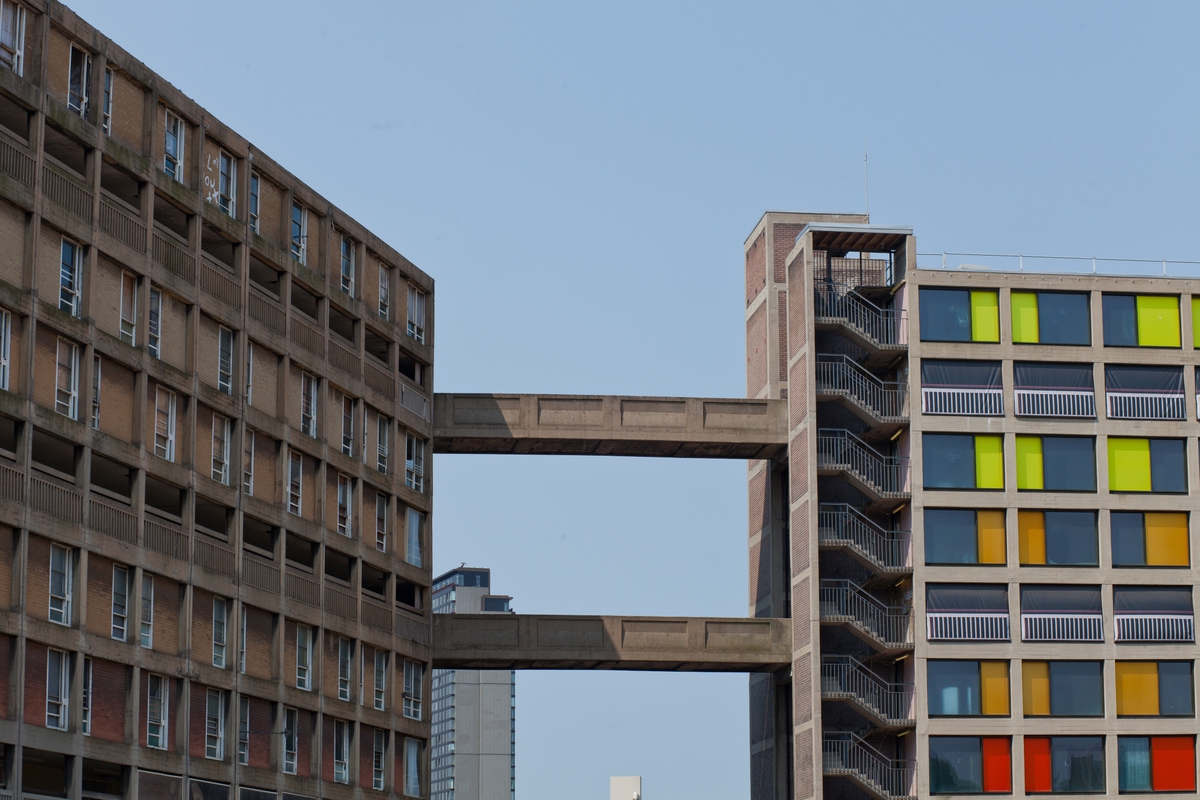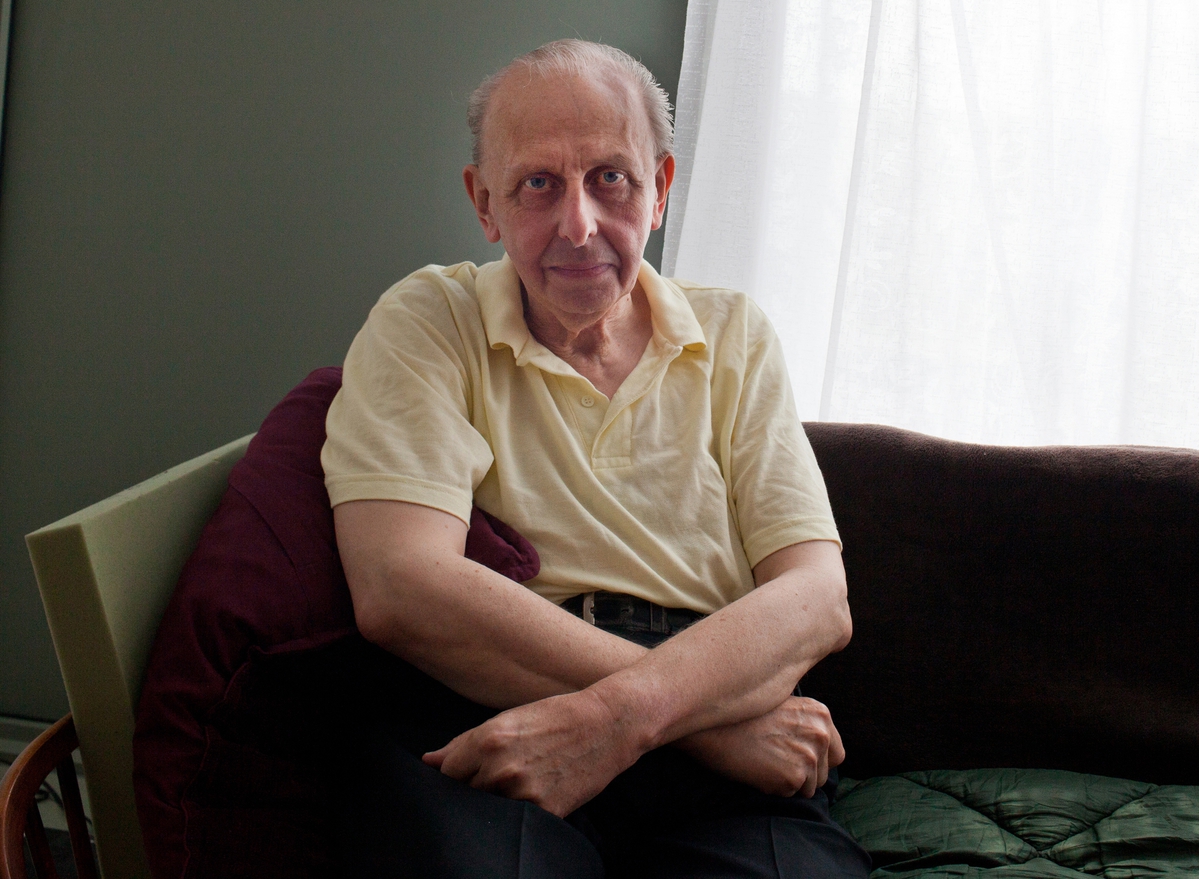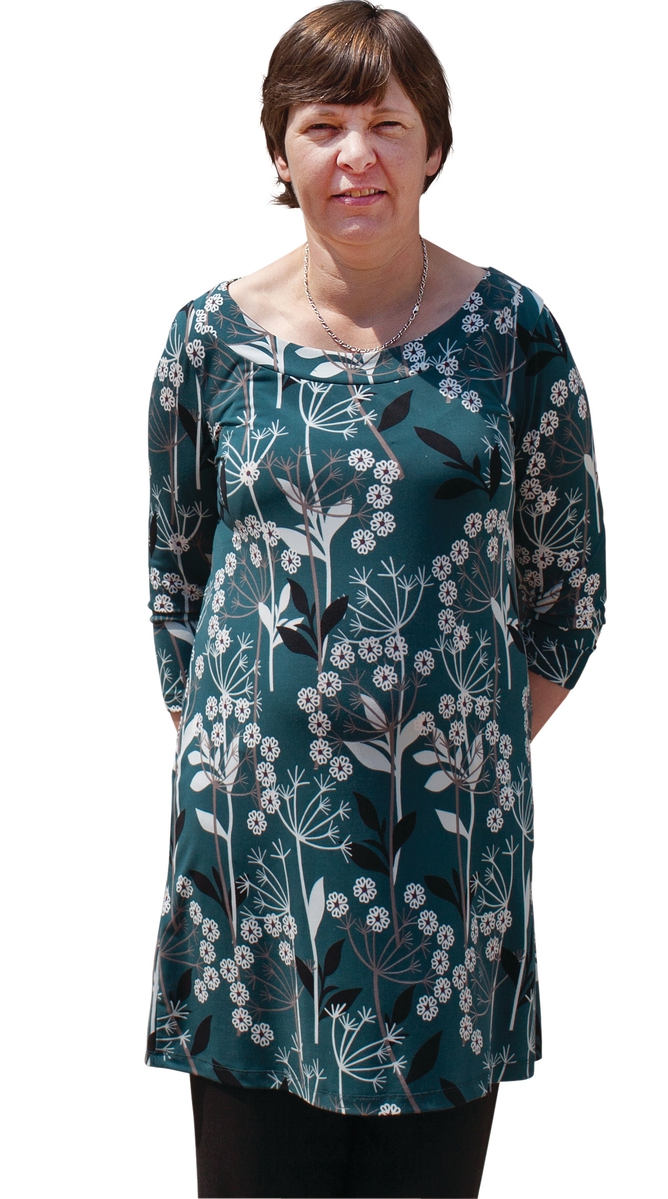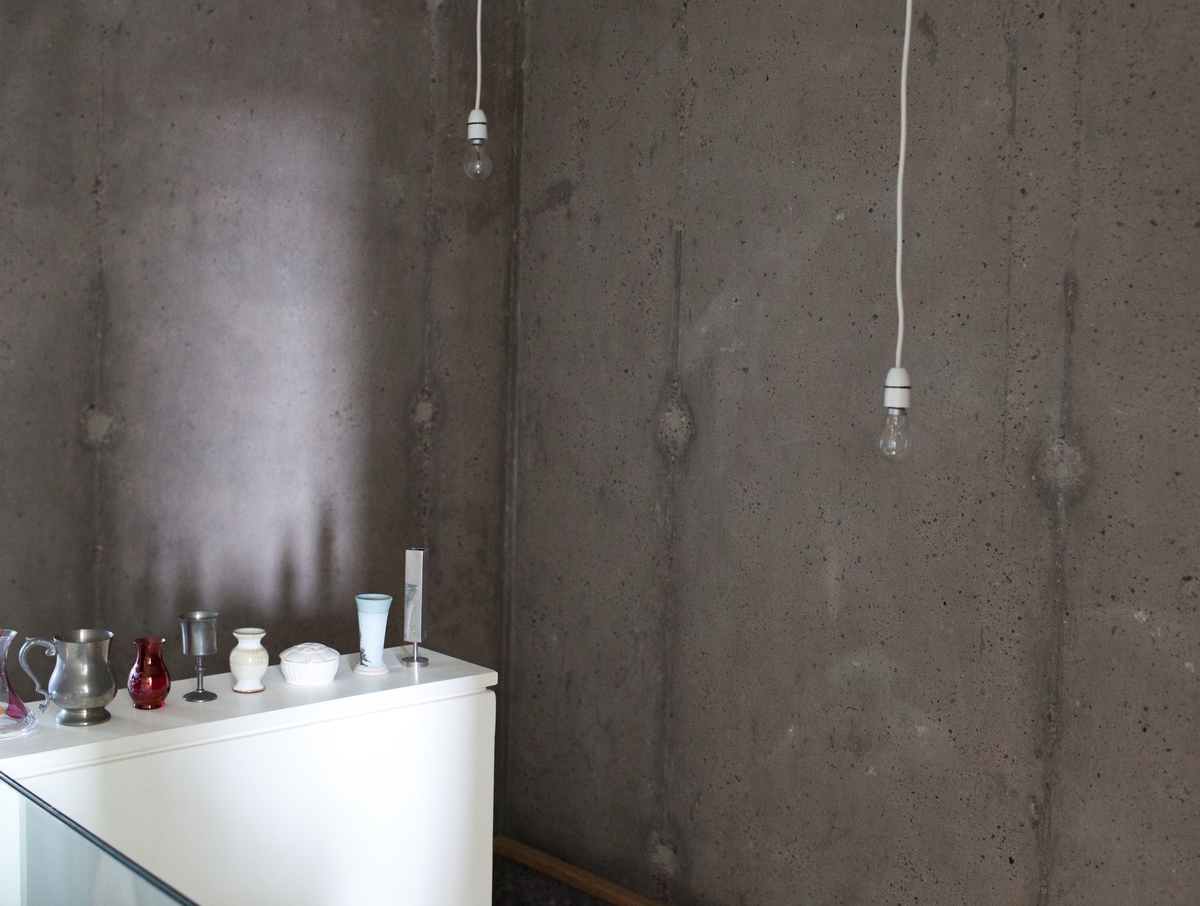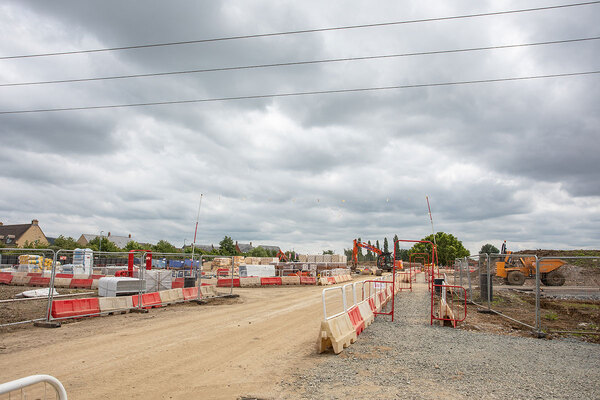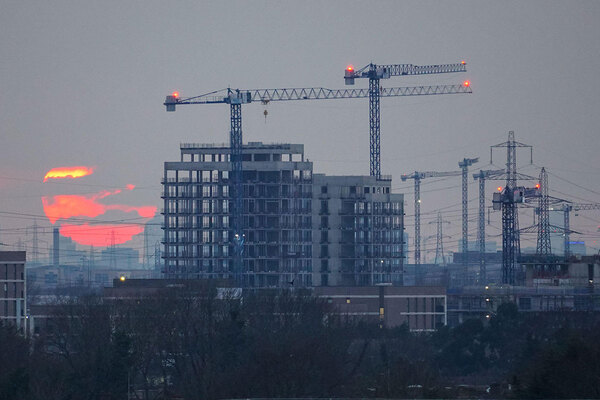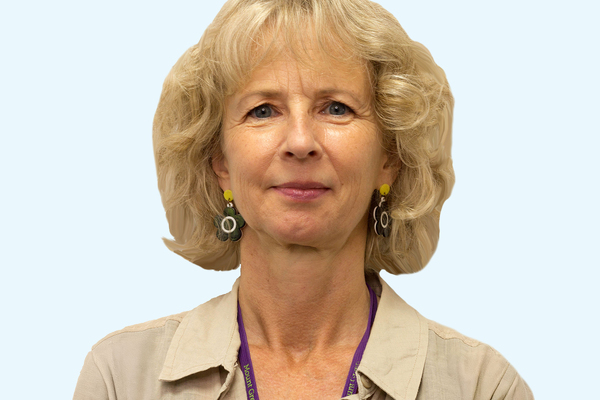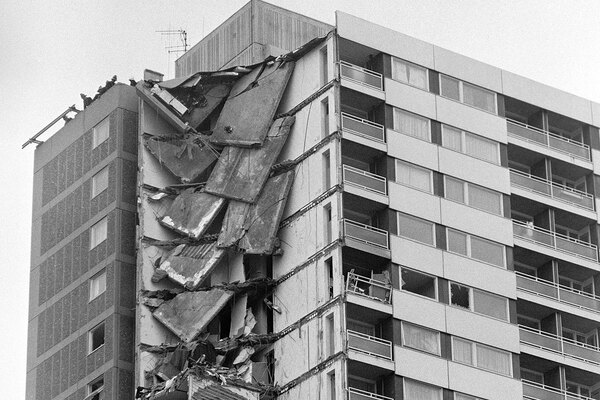Uphill struggle
The iconic Park Hill estate in Sheffield is undergoing massive regeneration, but as the first residents settle in, what do they think of their new homes now it’s clear they will be waiting a long time until the scheme is completed? Alex Turner finds out
For all the kilometres of carefully patched concrete that enfold you during a walk through the renovated high-rise section of Sheffield’s Park Hill estate, it is subtler details that transmit echoes of the building’s history.
Inhale, and you can still catch a decades-deep whiff of municipal disinfectant. Peer behind matt-painted doors at junctions of the repaved ‘streets in the sky’ and you’ll find bin chutes like those in Sheffield Council’s remaining tower blocks.
The rest - the sharp-edged restored frame and balconies; narrowed walkways and redesigned flats - is a slightly jarring collision of old and new that feels as if it’s still settling into place.

The juxtaposition of the old Park Hill and the revamped ‘Flank A’
Opened in 1961, the once popular brutalist blocks that dominate Sheffield’s skyline originally contained 994 sought-after council-owned homes. However, the estate began to fall into decline towards the end of the 20th century, when it developed a bad reputation, its poorly-lit walkways known as the sites of muggings and drug deals. In 2004, when developer Urban Splash - famous for breathing new life into historic landmark buildings - and housing association Great Places Housing Group were selected by Sheffield Council for its redevelopment, Park Hill’s future looked bright.
But the economic downturn slowed things down, and only one 78-home ‘flank’ of the £160 million regeneration scheme has so far been completed. This is the first section of the first phase of the development, which includes five phases.
The work has been shortlisted for the Royal Institute of British Architect’s prestigious Stirling Prize for 2013.
A total of 870 dwellings are planned for the estate, 200 of which will be for social rent, 40 for shared ownership and the rest for market sale. The originally mooted 2014 completion date has long been an impossible dream.
Tom Lawrence, development manager at Urban Splash, describes the regeneration of Park Hill as a ‘pre-2007 conception - something we could deliver in big chunks’.
‘Post-2007, mortgage availibility dropped completely out of the market, we then had to adapt that approach,’ he explains. ‘No longer can we deliver 250 apartments straight to market - it saturates too much. Plus you’re unable to get the finance or expose yourself to that level of cash flow.’
Inside Housing visited Park Hill almost six years after Urban Splash began work at the north end of the estate and six months since auditor Deloitte voiced concerns over the company’s long-term viability - the economic downturn has had an impact on Urban Splash’s whole commercial and residential property portfolio, and it has reported pre-tax losses for 2011/12 of £15.4 million.
Many of the first 78 homes are occupied by newcomers - households that have bought on the market paying upwards of £90,000 for a one-bedroom flat. But social first-lets are ring-fenced for former Park Hill tenants, and since January the 26 properties for social rent have been occupied. Eighteen of these are home to residents who’ve moved from the opposite end of the estate and the remaining eight are tenants that were decanted away from Park Hill and have moved back.
We wanted to find out how residents, both those with new fashionable city centre pads in Flank A and those waiting to move out of their homes elsewhere in the estate, feel about life in Park Hill now. And what is it like not knowing when the scheme will be completed?
Resident involvement
Great Places Housing Group is the landlord for the social homes in Park Hill and will be responsible for managing the whole development once completed. It’s in the process of setting up a residents’ association to help people integrate.
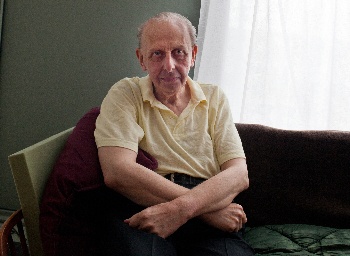
Neil Frost, a long-term Park Hill resident, in his new flat.
The 16,000-home landlord says it wants the community to be shaped by its residents. Ten people attended an initial meeting on 21 June, and Kay Graham, who has just been appointed Great Places’ resident services co-ordinator, says she’s relishing the challenge of growing the group of Flank A residents. ‘I want to ensure we’ve got a bespoke residents’ voice,’ she says when we take a seat in her site office. ‘To get this job was fantastic. It’s going to be successful - vibrant; high demand - somewhere people want to come to.’
Ms Graham studied the history of Park Hill as part of her degree in housing professional studies, which she completed in 2006. She wants to recreate the feeling of community that was loved by tenants living here in the 1960s.
‘It’s about how private people like me will slot in with Great Places,’ says Kate Foxton, 67, who is currently renting a flat privately in Flank A and is in the process of buying a property a few floors below in the revamped section of Park Hill. ‘I’ve never lived in a block like this,’ she adds.
Ms Foxton grew up in South Yorkshire but had lived in Worthing since 1985 before returning to Sheffield earlier this year. Her brother, a Great Places tenant, helped her scope out the scheme.
‘I love the fact it’s in the city but just out,’ continues Ms Foxton, who missed a letter about the residents’ association but is interested in future meetings. ‘I think I’d just “done” suburbia. I want to live in the city; go to the theatre.’
So far, the regeneration of Park Hill has won five awards, with judges impressed by the way the architectural heritage of the estate is being preserved. However, what wins gongs - for example, stripping interior walls back to their brutalist concrete - does not always appeal to residents.
Urban Splash’s Mr Lawrence, admits that there has been some criticism from longer-term Park Hill residents. ‘Some people never like change - have literally gone from living 1950s/60s style, Artex on ceilings, and moved into something that’s modern - it will feel alien,’ he says.
‘If you’re in a building of architectural importance, we want to show that off,’ Mr Lawrence explains. ‘If we plasterboard everything and paint it white, you could be anywhere.
‘The point we wanted to make was that you aren’t in a white box; it’s about concrete - if concrete’s not your thing, Park Hill isn’t for you.’
Retaining certain architectural details is written into Great Places tenants’ tenancy agreements, leaving them with limited control over the feel of their new homes.
‘I’ve lived here 25 years - if I don’t know it’s made out of concrete, it’s a bit late,’ points out Neil Frost, 65, a veteran of three Park Hill flats, now living in Flank A - one tenant Ms Graham hopes will be a prominent voice on the residents’ association.
Pushing for change
Enabling residents to have a bit more control over the interiors of their homes is something Mr Frost would like to campaign for. ‘You can’t change [the interior]: it’s in the tenancy agreement - I’ll be pushing it in meetings, but I’ll probably be flogging a dead horse,’ he says.

Tthe concrete walls
Concrete aside, Mr Frost says his flat has its good points, it is more spacious and has better heating and insulation than his old one, and its bad points, it’s hot in summer, and it overlooks a building site. ‘It was a question of where else [would I go, if not here],’ he says. ‘The good council stuff is sold. I thought, I might as well go for a new flat rather than an old one.’
Beyond Flank A’s glass doors, up the road past Grace Owen nursery - where children’s voices ring from an empty block - several dozen of Mr Frost’s ex-neighbours remain in situ (see box: Nursery slopes). Residents were offered priority to move into one of the new flats, but many have declined - they’d rather move elsewhere, despite having called Park Hill home for decades. Two women chatting at an open maisonette door ask not to be named but are happy to air their views.
A lost community?
‘Have you seen the new flats?’ asks one woman, a social tenant of 42 years and a member of the outgoing residents’ association, gesturing northwards. ‘They’re not Park Hill - bare concrete walls. I want something nearby - there’s nothing doing. Everything’s somewhere you wouldn’t want to move to,’ she says. Higher rents in Flank A - a two-bedroom flat costs £86.66 per week, compared to a typical weekly rent of £80 in the ‘old’ Park Hill - was also a disincentive.
Her neighbour of 36 years, a leaseholder who says she would have liked the estate to have stayed as it was, has bought a property in nearby Manor Park. ‘They used to call this “Totley Row” [referencing an affluent suburb on the edge of Sheffield] - it was the posh end of the flats. We’d have street parties; leave our doors open. Look at it now. A community’s been ruined,’ she says.
Sheffield Council - which recently took 42,000 properties back in-house from arm’s-length management organisation Sheffield Homes - has 13,000 people registered to bid for properties through its choice-based lettings scheme, and has assigned a housing officer to support Park Hill tenants bidding for other properties and to move on. It continues to decant tenants, but when their blocks will be lived in again is uncertain. ‘There’s a lot of commitment to making it happen,’ says Great Places chief executive Matthew Harrison, explaining that the housing association’s frustrations at Park Hill’s slow progress have been offset by the project team’s positive attitude. ‘The focus is getting phase one done.’
Urban Splash’s Mr Lawrence reckons the balance of phase one - 185 more properties, including 30 for social rent - will be finished in 18 to 24 months’ time. Beyond this, he says it’s a matter of ‘never leaving Park Hill until the job’s done’. But he admits ‘strong caveats’ about demand and the availability of debt finance mean it’s impossible to say whether the project will be finished a decade from now.
In the meantime a population will continue to return, gradually. Two design firms have taken some of the new commercial space in Flank A, and there’s talk of other businesses moving in to provide local amenities. But as delays stretch out and memories fade, it remains to be seen how many more former residents will return.
Timeline: Sheffield’s streets in the sky
1957 to 1961: Park Hill was built by Sheffield Council on a site covering 32 acres. Constructed of reinforced concrete, its brutalist design features broad ‘streets in the sky’ wide enough for a milk float to pass along.
1998: Park Hill is awarded grade II listed status, because English Heritage wanted to preserve its brutalist modernist architecture, making it the largest listed structure in Europe.
2003: Sheffield Council and English Partnerhips (the forerunner to the Homes and Communities Agency) begin to put together a vision for the future of Park Hill, which had fallen into decline, that would transform it into a vibrant, mixed-tenure estate with homes, shops and businesses.
2004: Great Places Housing Group and developer Urban Splash are selected as partners for the project, which has received £13 million in funding from Transform South Yorkshire (the former housing market renewal agency),
£24 million from the Homes and Communities Agency and £10 million from Great Places.
2007: Urban Splash begins work on phase one of the project.
2013: The first residents move into Flank A in January.
Nursery slopes

‘The fact that the flats have emptied around us has had no impact in terms of involvement with the community,’ says Cath Whittingam (pictured), headteacher of Park Hill’s Grace Owen nursery. ‘There are people who think it’s gone, but it’s very much up and running; lively.’
The nursery is the last remaining amenity from ‘old’ Park Hill. After half a century near the top of the estate, it’s due to move to new premises in Flank A.
Grace Owen must wait on £100,000 of fit-out funding before it can relocate. At this point only a handful of its children live on Park Hill itself, but Ms Whittingham hopes it can once again act as a community anchor for residents of the flats, and relink the development to its surroundings.
‘The new build will draw people in and have the capacity to have new things happen in terms of education for adults; families,’ she goes on. ‘We’re looking at first steps of increasing holiday care by accommodating children up to a greater age [currently eight].’
